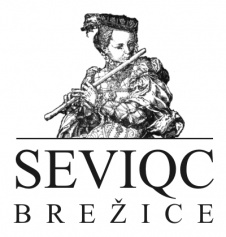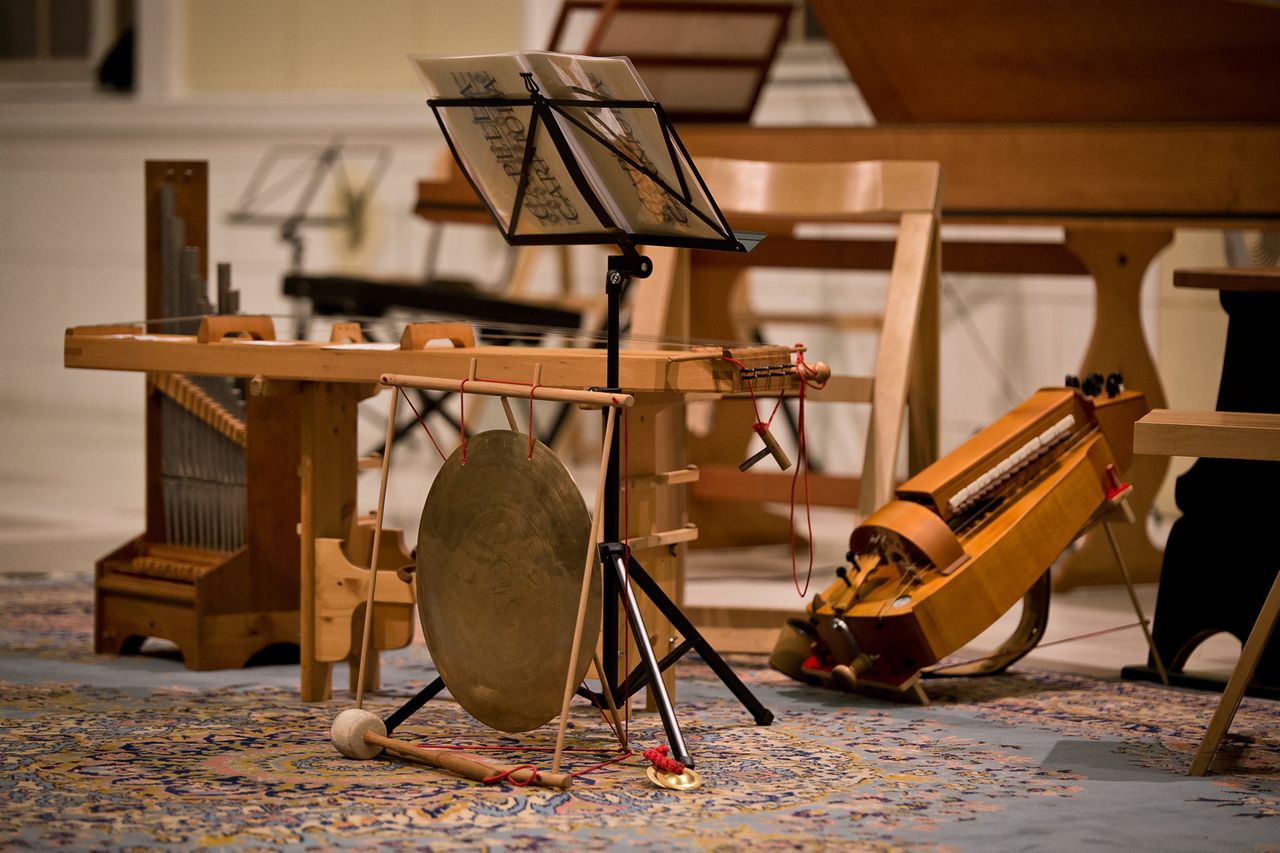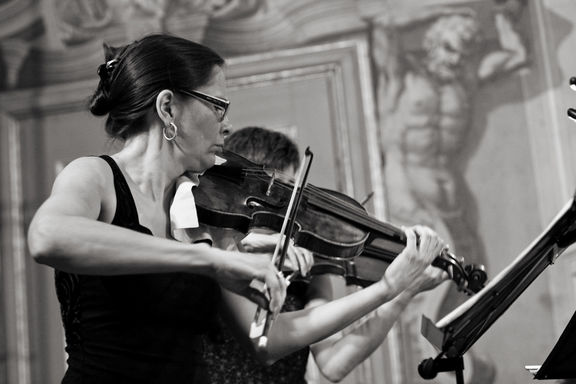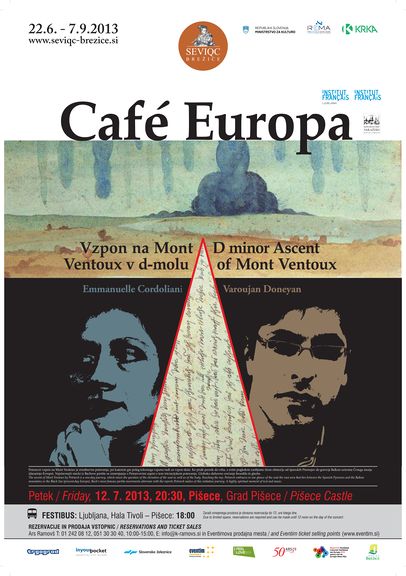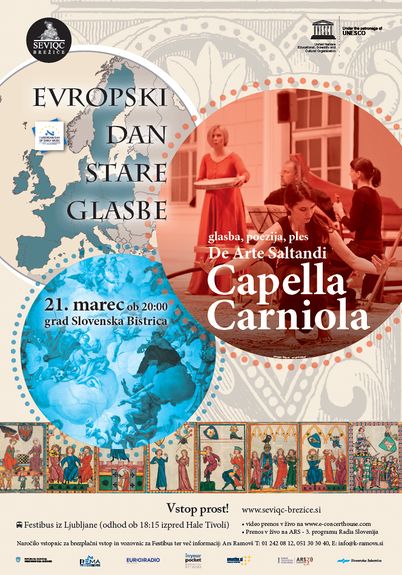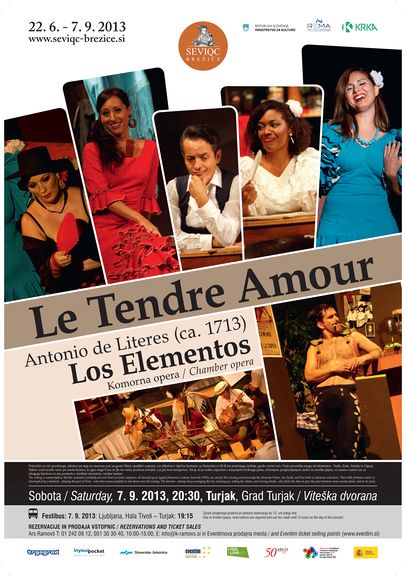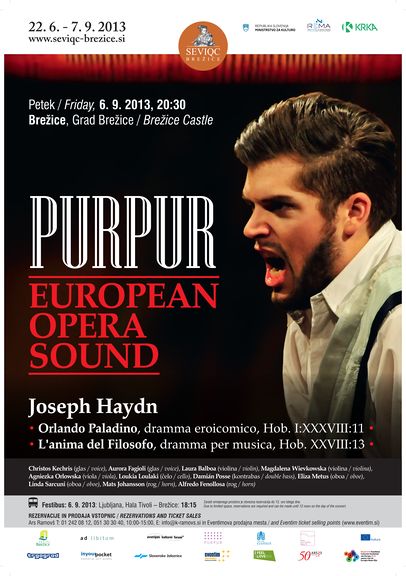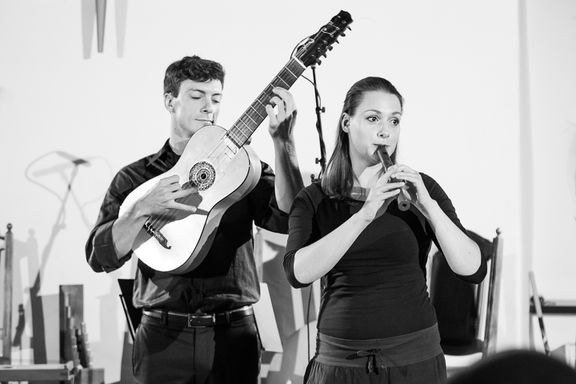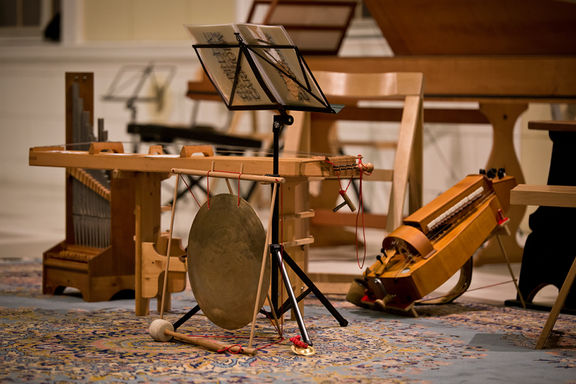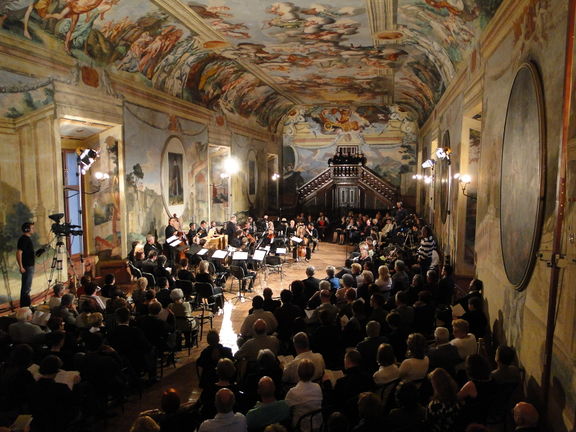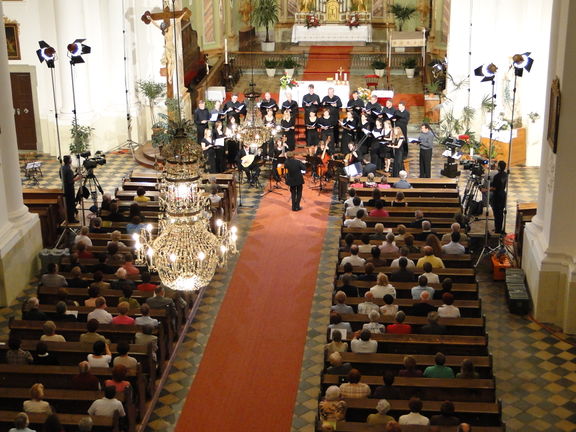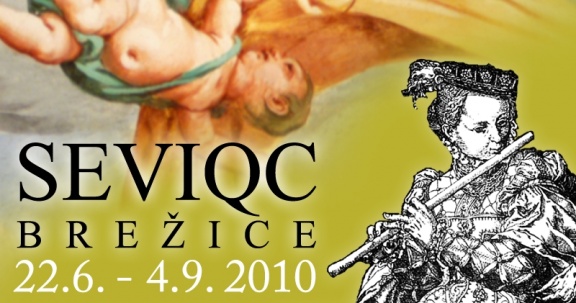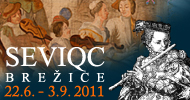Background
The Seviqc Festival originated in Radovljica in 1982 but relocated to Brežice in 1997 due to insufficient support. Since then, it has expanded significantly across Slovenia. Unfortunately, archives from the initial years (1982-1996) are lost, but detailed statistics are available from 1997 onwards.
Between 1997 and 2023, the programme has engaged 2,301 performers from 54 countries in 5,187 performances across 134 Slovenian venues, with 109 of these being historical sites. While 25.35% of performers held Slovenian citizenship, they accounted for 22.63% of performances.
The Seviqc festival promotes gender equality. Rather than selecting artists based on gender, the programme focuses on the merit of proposals. Consequently, the early music scene represented at the festival exhibits a balanced gender ratio, serving as a model for other fields. Statistics indicate that 50.11% of performers and 51.44% of performances were by women.
The festival has achieved significant recognition, becoming a member of REMA in 2003 and earning the EFFE label in 2015, which has been renewed for 2024-2025. Since 2014, the Slovenian Academy of Sciences and Arts has served as the festival's honorary patron, a role confirmed for 2024.
The Seviqc festival's development is rooted in three core pillars: early music, cultural heritage, and cultural tourism. Efforts include fostering Slovenian talent, connecting domestic and international artists, presenting top-tier international performances, and integrating educational components. The festival prioritizes showcasing performances in culturally significant venues to promote Slovenia's heritage. With a focus on cultural tourism, the festival attracts a significant number of visitors from other regions. In 2023, 82.2% of attendees were from outside the local area, exceeding the 2014-2023 average of 71.7%. To increase visitor numbers, the festival is developing tourist packages, particularly targeting Celje, a city with excellent rail connections to Ljubljana and Maribor.
Accessibility is a key concern. The festival offers numerous free events, benefits for members of the Festival Lady Friends Club, family packages, free admission for companions with reduced mobility, and group discounts.
Venues
All festival venues are integral parts of Slovenia's architectural and cultural heritage, primarily comprising castles and churches. Reflecting the festival's strong commitment to cultural decentralization and regionalization, its events span nearly the entire country. In 2024, the Seviqc programme will take place at Bogenšperk, Celje, and Sneženik Castles, the Old Counts' Mansion, the National Hall, and the Cathedral Church of St. Daniel in Celje, as well as the city's music school and public library, at Devil's Tower in Soteska, and the Cultural and Congress Center in Dolenjske Toplice.
Programme
The main objective of the festival is to promote the revival of the Early Music scene in Slovenia. Other aims included stimulating cultural tourism, developing Early Music departments at Slovene conservatories and the Academy of Music, contributing to a higher level of professional music. The festival participates in the European Day of Early Music (EDEM) concerts programme organised on the 21st of March throughout Europe, coordinated by REMA - European Early Music Network and under the patronage of UNESCO.
The Seviqc Festival programme is aimed specifically at the public but also enjoys a notable reputation amongst professional music critics and audiences. Radio Slovenia records selected concerts of the Festival and since 1997 has also presented festival recordings throughout the year (Banchetto Musicale: Brežice after Brežice). One or two concerts a year are recorded for Slovenia's national television station. Several festival editions are available also on CDs.
Besides hundreds of prominent individual artists, the festival has since its beginning presented world recognised ensembles, such as: Accademia di Musica Antica Bolzano (IT); Accademia Daniel Israel (IL); Adel Singers (NO); Akademia Muzyczna w Krakowie (PL); Arcana ensemble (IT); Ars Antiqua Austria (AT); Capella Savaria (HU); Collegium Marianum (CZ); Dialogos (FR); Ensemble Cantilena Antiqua (IT); European Union Baroque Orchestra (GB); Helsinki Baroque Orchestra (FI); Het Barokorkest van het Koninklijk Conservatorium Den Haag (NL); Hrvatski barokni ansambl (HR); I Solisti di Cremona (IT); Komorni zbor RTV Slovenija (SI); La Stagione Frankfurt (DE); London Baroque (GB); Melande Amsterdam (NL); Musica Antiqua Köln (DE); Musica Antiqua Russica (RU); Stockholm Antiqua (SE); The Purcell Quartett (GB); Zarabanda (ES), Capella Carniola (SI), Nour Ensemble (IR), Accentus Austria (A), Les Ambassadeurs (F), etc.
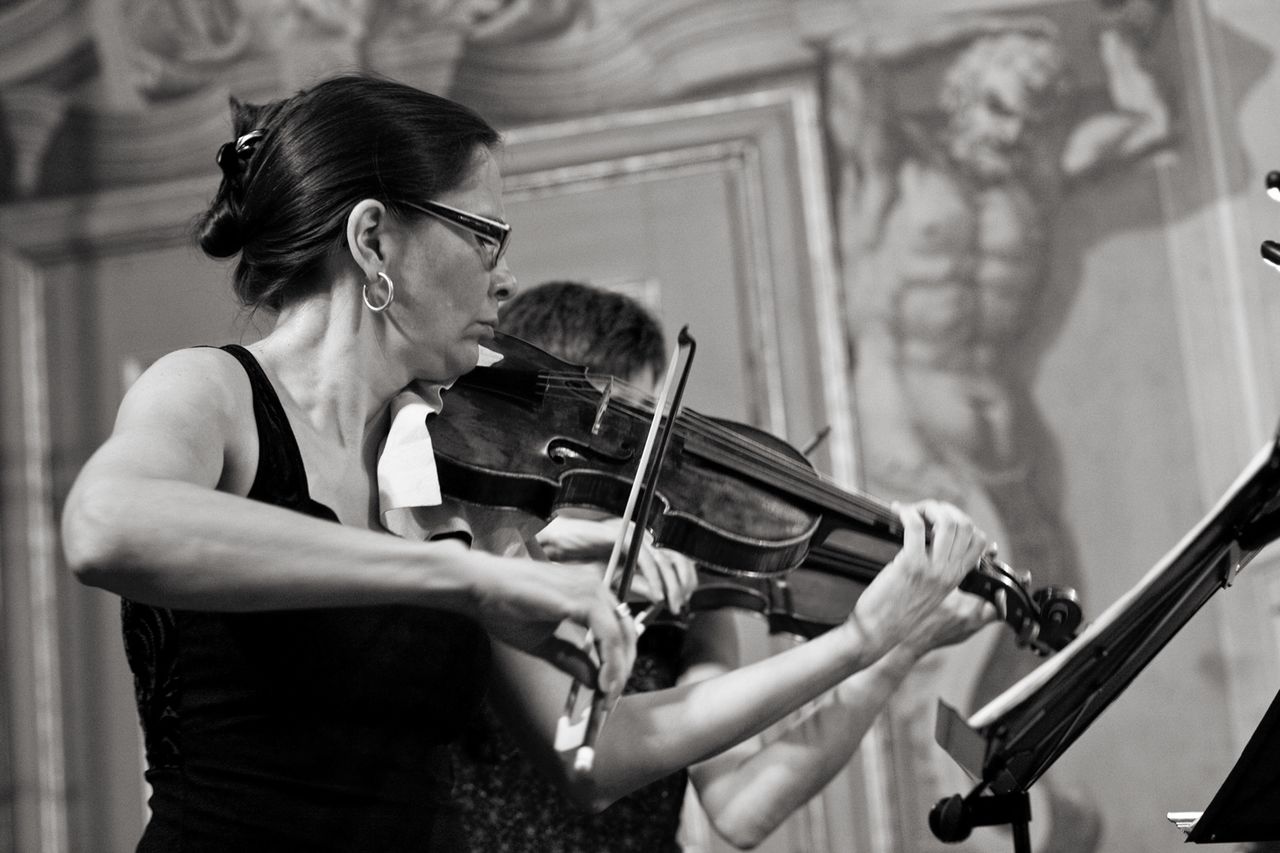 Accentus Austria performing 17th-century music at the Seviqc in 2013. The venue, Slovenska Bistrica Castle, was established by the Habsburgs in the 14th century but was later rebuilt. At the end of the 17th century, Franz Ignaty Flurer painted the Baroque illusionist frescoes.
Accentus Austria performing 17th-century music at the Seviqc in 2013. The venue, Slovenska Bistrica Castle, was established by the Habsburgs in the 14th century but was later rebuilt. At the end of the 17th century, Franz Ignaty Flurer painted the Baroque illusionist frescoes.
In 2015 the programme comprised musica cubicularis (SI), XVIII-21, Le Baroque Nomade (FR); Jean-Christophe Frisch (FR); Camerata Bachiensis (DE); Faenza (FR); Académie baroque européenne d’Ambronay (FR) & Radio Antiqua (NL); Concilium musicum Wien (AT); Ensemble Diatessaron (ES); Svetilen (RU); Edin Karamazov (HR); Amsterdam Corelli Collective (NL); Musica Aeterna (SK); Flanders Recorder Quartet (BE); Voces Suaves (CH), etc.
The festival regularly provides quite generous discounts on ticket prices (for students; people with low-income; families; members of various Slovene societies and associations; ticket-holders to other festivals such as Ljubljana Festival, Primorska Summer Festival). All the events taking place at church locations have free admission. Every concert is enriched by superb wine tastings and the occasional special event.
International cooperation
Since its inception in 1982, the Seviqc programme has incorporated international cultural elements. Until 2008, the festival partnered with a different European country each year. Collaborations included Great Britain (2000), the Netherlands (2001 and 2004), the Czech Republic (2002), the European Union (2003), France (2005 and 2008), Italy (2006), and Spain (2007). The festival maintains ongoing collaborations with various European countries and their embassies.
A member of REMA (Réseau Européen de Musique Ancienne) since 2003, Seviqc facilitates the exchange of festival recordings with Radio Slovenia through the European Broadcasting Union (EBU).
The festival's producer, Ars Ramovš, has been involved in numerous European partnerships and projects, including the Student Festival and Evromreža (1998-2004), Debut Junger Sänger (2003-2004), ZABAF (2004-2006), a co-production with the Festival Toscano di Musica Antica (2006-2008), the PurPur project (2011-2014), and the eeemerging project (2014-2018).
See also
External links
- Seviqc website
- REMA (Réseau Européen de Musique Ancienne/European Early Music Network) website
- FestivalFinder.eu
- The Seviqc channel on YouTube



